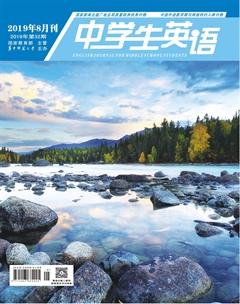Reasons for adaptations in Children’s literature translation
郭海云
In the article “Narratology meets Translation Studies or, The Voice of the Translator in Childrens Literature” Emer OSullivan mentioned “changes” “adaptations” and “manipulations” in translations of childrens literature. She commented that “changes” “adaptations” and “manipulations” are reasonable within the specific context in terms of the differing social, educational or literary norms prevailing.
Adoptions are frequently used in translations of childrens literature. In the translation of childrens literature, it is more common for translators to be free in their translations. In fact, most of them do not stick very closely to the source text, because the main aim is to have the text to be acceptable and attractive to the new audience. Translators tend to use images, expressions and ways of telling stories that are familiar to the target children. The possible reasons for making adoptions in translations of childrens literature are analyzed as follows:
1. The educational purpose of childrens literature
In previous times, since children were lack of independence, childrens literature has not gained much attention. Over years, things have changed a lot, especially from 1900s, people are getting to know the role of children and the literature should be seriously treated. Childrens literature serves not just as entertainment but tends to have more educational functions. Whether the publishers or the parents who decide the choosing of books for children to read, they both hold the good wishes to educate childrens behavior and affect their thoughts towards world and life. According to its function of education of childrens literature, most of the translations share the identical purpose of educating children.
2. Ideological and poetological factors
Lefevere has pointed out that “Translation is, of course, a rewriting of an original text. All rewritings, whatever their intention, reflect a certain ideology and a poetics and as such manipulate literature to function in a given society in a given way” (Lefevere, 1992). According to his ideas, translations are not merely the transferring of languages but also a rewriting of the source culture. With different historical conditions, rewriting is governed by ideology and petrology. Translators usually make some changes through rewriting in their translations to be in line with the prevailing ideology and petrology in a particular era in order to make the translations to be accepted by the majority readers.
3. Censorship
In many countries, censorship of publications is very strict. Some specific content relating to sensitive issues of politics or religions is monitored by the government authority. So to avoid the translations not being published, translators use “adaptations” or “rewriting” to translate source texts. Adaptation appears more frequently in childrens literature due to its more strict censorship in childrens literature.
However, some arguments are presented against “changes”, “adaptations” and “manipulations”. There is a voice saying that children are adaptable. So we dont need to make everything completely familiar to them. It is apparent that one of the core purposes of children literature is to broaden childrens comprehension of the world. As a result, if a translator adapted too much to be comfortable and familiar to the target children audiences, the educational or learning aspects in reading childrens books are lost. So appropriate adaptation is necessary but too many of them might hinder the development of childrens perceived ability of the outside world.
References
[1] Inggs, Judith. (2009) Translating, Rewriting and Retelling Traditional South African Folktales: Mediation, Imposition or Appropriation?
[2] Lefevere, A. (1992) Translation, Rewriting and the Manipulation of Literary Fame, London and New York: Routledge.
[3] OSullivan, E. (2003) Narratology meets Translation Studies, or, The Voice of the Translator in Childrens Literature. Meta XLVIII, 1-2, 197-207.
(作者單位:University of the Witwatersrand, Johannesburg (南非金山大学))

